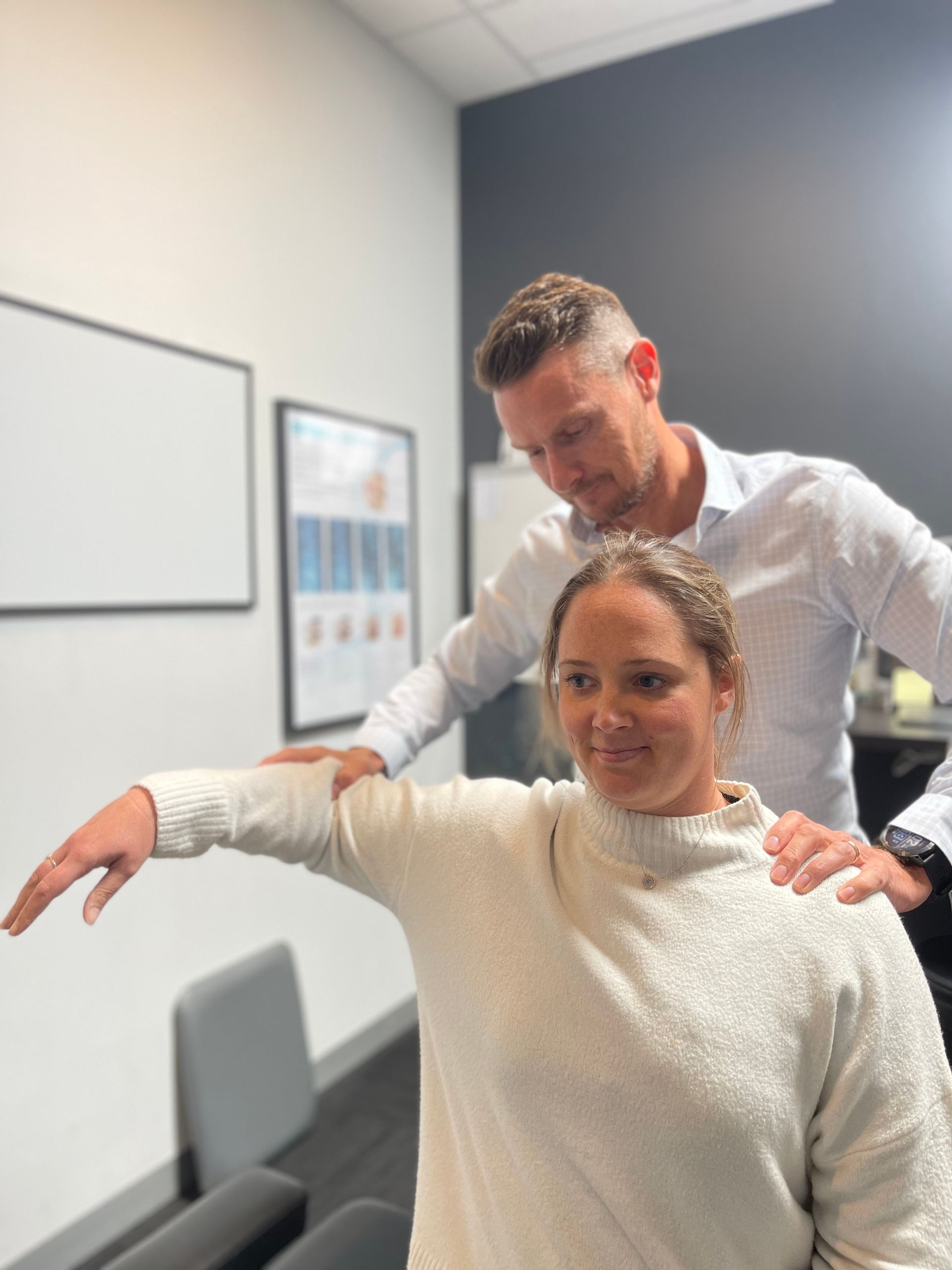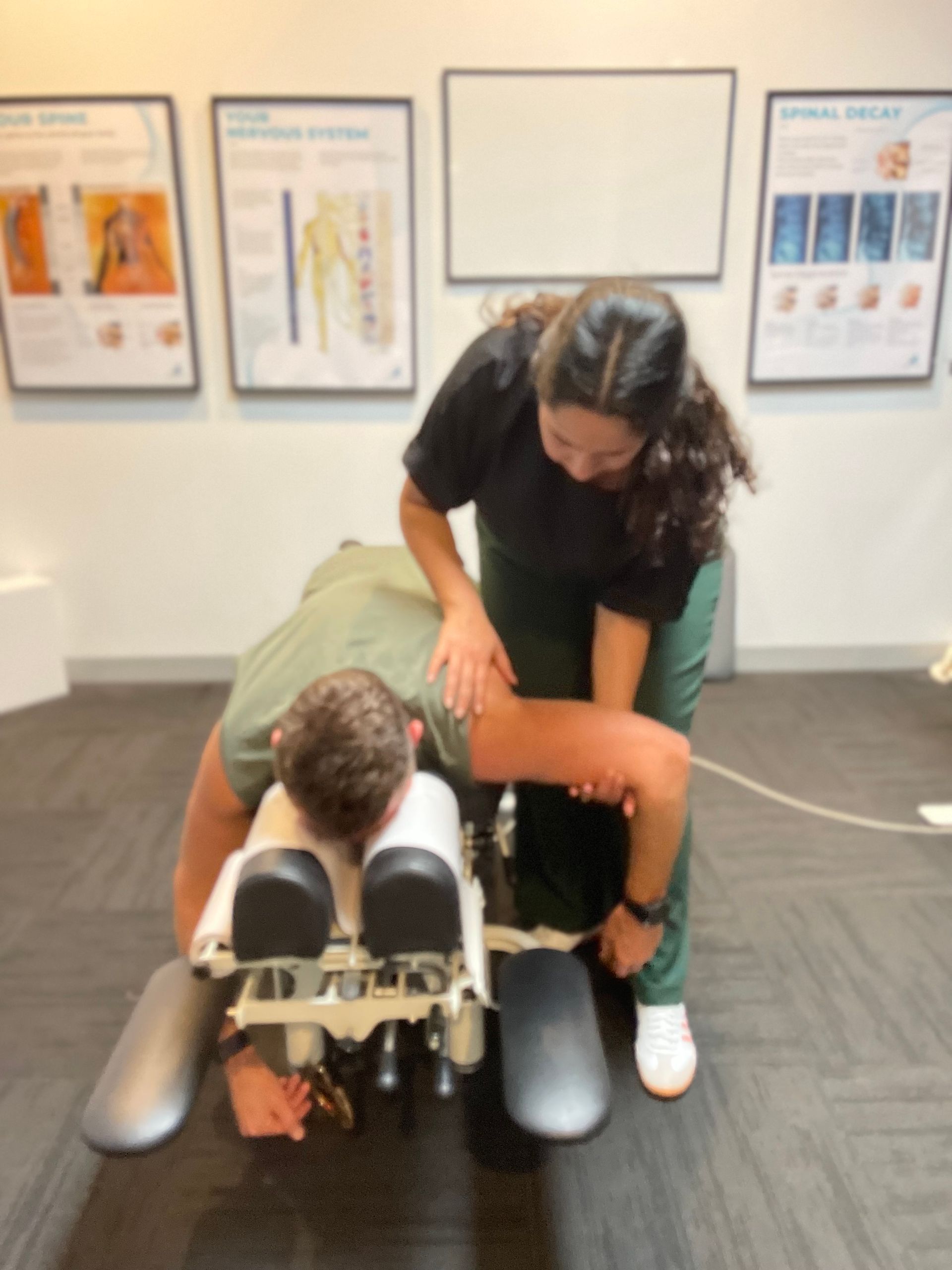What Actually Happens In A Chiropractic Adjustment
Ever wondered what actually happens in a chiropractic adjustment?
It's more than cracking your back or neck. From my personal experience, chiropractic care is an innovative approach to health and wellness. I was curious about spine adjustments when I first visited a chiropractor. I didn't realize how much this simple procedure would affect my health.
When the chiropractor gently manipulates my spine with their hands or specialized instruments, I feel relief and alignment immediately. They unlock my body's hidden potential, allowing it to function at its best. I tell you, nothing beats feeling those tight muscles relax and those nagging pains disappear.
Chiropractic adjustments have far-reaching effects beyond pain relief. These adjustments realign the spine and remove nervous system interference to restore balance and optimal body function.
Resetting our nervous system helps our body communicate more efficiently. Stay tuned as we explore what happens during a chiropractic adjustment if you're looking for new ways to improve your health.
What Is A Chiropractic Adjustment
A chiropractor uses controlled force to move specific joints in your body, improving mobility and relieving pain.
Since spinal joints are important for movement and musculoskeletal health, chiropractors usually adjust them. The chiropractor uses targeted pressure to realign and function these joints, improving movement and reducing pain.
Chiropractic adjustments may make popping or cracking sounds. These sounds are normal when joint gas pockets release. It may seem alarming at first, but this is normal during adjustments. Since everyone's experience is different, not all adjustments make these sounds.
Chiropractic adjustments aim beyond pain relief. It also corrects joint misalignments to improve body function. Aligning and freeing your joints can improve your nervous system and health.
A chiropractor uses controlled force on specific joints, mostly the spine, to give you an adjustment. Restoring alignment and function improves joint mobility and reduces pain. Gas release in the joints may cause popping or cracking sounds, but this is normal. By correcting musculoskeletal misalignments, chiropractic adjustments improve body function.
Role Of A Chiropractor

Imagine yourself in my skilled hands as I manipulate your spine to relieve pain and restore balance. My main goal as a chiropractor is to adjust. I apply controlled force to misaligned or restricted spine areas. I do this to correct spinal dysfunction and optimize body function.
I apply precise pressure to your spine vertebrae with my hands or specialized instruments during a chiropractic adjustment. This activates mechanical receptors in joints and muscles, sending brain signals to improve joint position, sense, and coordination. I can realign and move your spine with this process.
Chiropractic adjustments release endorphins, a major benefit. Your spine releases these natural painkillers when I manipulate it. This reduces pain and promotes relaxation.
Chiropractic adjustments relieve pain, restore balance, and boost nervous system function. Spinal manipulation helps your brain and body communicate, optimizing nerve flow and ensuring system harmony.
Benefits Of Chiropractic Adjustments
Chiropractic adjustments improve nervous system function and relieve pain, improving your health.
Skilled chiropractic adjustments apply controlled force to the spine or other joints. Chiropractic adjustments restore alignment and movement to help the body heal naturally. Chiropractic adjustments have three main benefits:
- Pain Relief: One of the primary reasons people seek chiropractic care is for pain relief. Chiropractic adjustments can effectively alleviate pain in various parts of the body, including back pain, neck pain, headaches, and joint discomfort. By realigning misaligned joints and reducing inflammation around nerves, chiropractors help relieve pressure on sensitive tissues, providing much-needed relief.
- Improved Nervous System Function: The nervous system controls every function in our bodies, from movement to organ function. When spinal misalignments occur, they can interfere with nerve signals traveling between the brain and different parts of the body. Chiropractic adjustments help correct these misalignments, enhancing nervous system function and improving overall health.
- Enhanced Overall Health: Chiropractic care goes beyond simply addressing symptoms; it focuses on improving overall health and well-being. By restoring proper alignment in the spine and musculoskeletal system, chiropractors promote optimal functioning of all body systems. This leads to improved energy levels, better sleep quality, enhanced immune function, increased mobility, and a better ability to handle stress.
Understanding Spinal Manipulation

Gentle spine manipulation is like a therapeutic dance. A chiropractor uses their hands or specialized tools to apply controlled force to specific spine joints during an adjustment. This improves motion, alignment, pain, and function. Optimizing spine and nervous system function lets your body heal naturally.
Chiropractic adjustments stimulate spinal mechanical receptors. These receptors are essential for sending joint position, movement, and pressure information to the brain. Spinal manipulation activates these receptors, improving body coordination and balance.
Chiropractors make quick, precise spine adjustments. Gasses released from joint spaces can cause a 'pop' or 'crack'. This is both safe and rarely uncomfortable, despite its intimidating appearance.
Spinal manipulation restores proper motion and alignment to spine joints, affecting the nervous system. Your nervous system controls every cell, tissue, and organ in your body, so it must be healthy. Chiropractic adjustments improve well-being by restoring brain-body communication.
Effects On The Nervous System
As you study the nervous system, you'll see how spinal manipulation affects your body's natural healing. Chiropractic adjustments improve nervous system function, which controls all bodily functions. Spinal adjustments can benefit the nervous system in these ways:
- Activation of mechanical receptors: During a chiropractic adjustment, mechanical receptors located in the joints of the spine are stimulated. These receptors send signals to the brain, which then triggers a response from the nervous system. This activation helps improve communication between different parts of the body and enhances overall neural function.
- Reduction of nerve interference: Misalignments or subluxations in the spine can put pressure on nerves, interfering with their proper functioning. Through gentle and precise adjustments, chiropractors can realign the spine, relieving this pressure and reducing nerve interference. This allows for improved transmission of nerve impulses throughout the body, leading to better overall health.
- Restoration of balance: Spinal adjustments help restore balance within the nervous system by promoting proper alignment of vertebrae. When misalignments are corrected, it allows for optimal flow of energy and information along nerve pathways. This balance is essential for maintaining optimal health and well-being.
- Enhancement of overall well-being: The effects of chiropractic adjustments on the nervous system extend beyond physical health. Many patients report improvements in mental clarity, reduced stress levels, increased energy levels, and improved sleep patterns after receiving regular spinal adjustments. By improving nervous system function, chiropractic care supports holistic well-being.
Understanding how spinal adjustments affect our nervous system helps us understand their health benefits. These effects improve neural function and joint motion. Let's examine how chiropractic adjustments improve joint motion and musculoskeletal health.
Improving Joint Motion

Chiropractic adjustments improve joint motion, flexibility, and musculoskeletal health. It is important to know what actually happens in a chiropractic adjustment.
Chiropractors use various techniques to target restricted joint movement. Chiropractors stimulate mechanical receptors in spinal joints by applying controlled force, improving mobility and function.
Chiropractic adjustments use spinal manipulation, a quick thrust to a vertebra or joint, to restore alignment and range of motion. A quick thrust to a vertebra or joint restores alignment and range of motion. Chiropractic adjustments can relieve joint restriction pain by targeting the affected area.
A common chiropractic technique is mobilization. Slow, gentle mobilization increases joint flexibility over time, unlike spinal manipulation. This technique is helpful for people with medical conditions or who are sensitive to sudden movements.
Chiropractic adjustments benefit muscles, ligaments, and tendons, as well as joint motion. Restoring joint alignment and function reduces soft tissue tension. This can improve muscle coordination and reduce inflammation.
Back manipulation and mobilization are effective chiropractic techniques for improving joint motion. These interventions stimulate mechanical receptors in specific spinal joints using controlled forces. Thus, your flexibility and musculoskeletal health improve.
Impact On The Spine And Neck
Chiropractic care can improve spine and neck health, improving well-being and range of motion. Chiropractors stimulate mechanical receptors in the spine and neck during adjustments. These receptors are essential for sending joint position, movement, and tension information to the brain.
Chiropractic adjustments target these receptors to restore spine and neck function. Chiropractic adjustments realign the vertebrae, affecting the spine. Poor posture, injury, and repetitive stress can cause subluxations. These misalignments can strain spinal nerves and disrupt nervous system function.
Chiropractors use their hands or specialized instruments to gently correct these misalignments. This improves brain-body nerve communication, reducing pain and optimizing function. Chiropractic adjustments help restore neck alignment and relieve pain.
The neck is especially susceptible to stress-induced tension from prolonged desk work or screen time. These habits can strain the cervical spine and cause muscle imbalances. Chiropractors use manual adjustments or gentle spinal mobilization to treat these issues.
By stimulating mechanical receptors that send joint movement and tension information to the brain, chiropractic adjustments improve spine and neck health. Chiropractors precisely realign spine vertebrae to reduce nerve interference and optimize nervous system function. Additionally, targeted neck adjustments reduce muscle imbalances caused by lifestyle factors like poor posture or excessive device use.
These spine and neck health improvements reduce pain, improve well-being, and increase range of motion. Therefore, understanding how chiropractic adjustments work is essential to understanding their transformative power.
How Chiropractic Adjustments Work

Chiropractic adjustments realign misaligned vertebrae and relieve neck tension, improving function and reducing pain. Chiropractors use targeted pressure or gentle thrusts to realign vertebrae. This activates spine mechanical receptors, sending brain signals to restore balance and health.
Chiropractic manipulations release endorphins. Natural painkillers relieve pain and boost well-being. When I adjust your spine, I release endorphins that immediately relieve pain. This is like giving your body its own pain-management pharmacy without external medications.
While realigning the spine and releasing endorphins, chiropractic adjustments also relieve neck muscle tension. This is especially useful for those who sit at a desk all day or do repetitive neck-straining activities. Chiropractic adjustments reduce neck pain and improve range of motion and flexibility by relieving tension.
Chiropractic adjustments align the spine and optimize nervous system function. These adjustments relieve pain and improve well-being by stimulating mechanical receptors, releasing endorphins, and relaxing neck muscles.
After understanding how chiropractic adjustments work, let's discuss common reactions without delay.
Common Reactions To Adjustments
A chiropractic adjustment may relieve and improve your health. Chiropractic treatments reduce pain and improve comfort for many people. This is because chiropractors treat the cause rather than just the symptoms.
Chiropractors relieve nerve pressure and restore function by manually realigning the spine and other joints. Some people experience immediate relief after a chiropractic adjustment, while others have normal, temporary reactions. Many people experience soreness or stiffness in adjusted areas. Like muscle soreness after a long break, this is similar. Remember that these common adjustment reactions are usually short-lived and not cause for concern.
Sleep quality often improves with adjustments. Chiropractic treatments often improve sleep, which boosts well-being. Chiropractic care may also boost energy and mood. Chiropractic adjustments improve the body's natural healing, improving functioning and quality of life.
Chiropractic adjustments often relieve pain and improve health. Soreness or stiffness are usually temporary and part of the healing process. Chiropractic care addresses chronic pain's root causes rather than masking it with medication or invasive procedures. Without delay, let's examine who can benefit from chiropractic care!
Who Can Benefit From Chiropractic Care

Who can benefit from chiropractic care's amazing effects? Chiropractic care benefits people of all ages and backgrounds. Chiropractic care can help athletes improve performance and chronic pain sufferers. Some key groups that can benefit from this treatment are:
- Athletes: Chiropractic care is commonly sought after by athletes due to its ability to promote proper alignment of the spine and improve overall musculoskeletal function. By ensuring that the spine is properly aligned, chiropractic adjustments can stimulate many more mechanical receptors in the joint than exercise alone could stimulate. This leads to enhanced proprioception and improved athletic performance.
- Individuals with chronic pain: If you suffer from chronic pain, chiropractic care may be able to provide much-needed relief. Gentle force applied during adjustments helps alleviate pressure on nerves, reducing pain and discomfort. Additionally, chiropractic adjustments can stimulate the release of endorphins, which act as natural painkillers in the body.
Furthermore, it's important to note that chiropractic care is not limited to specific age groups or professions. People from various walks of life can benefit from its effects. For example:
- Office workers: Those who spend long hours sitting at a desk often experience postural imbalances and muscle tension. Regular chiropractic adjustments can help correct these issues by realigning the spine and reducing muscle tightness.
- Elderly individuals: As we age, our bodies undergo various changes that may lead to reduced mobility and increased pain. Chiropractic care offers a non-invasive approach to improving joint function, flexibility, and overall well-being for older adults.
Chiropractic care has many uses and benefits for people. Whether you're an athlete looking for peak performance or someone with chronic pain, a licensed chiropractor can improve your musculoskeletal health.
Safety Of Chiropractic Adjustments
Concerned about chiropractic safety? These treatments are precise and careful to optimize musculoskeletal health.
Chiropractors undergo extensive training in diagnosing and treating spine and musculoskeletal conditions. They restore body alignment and function using manual adjustments and other methods.
Many studies show that chiropractic adjustments are safe and effective for many patients. Numerous studies have shown that these treatments can reduce pain, improve range of motion, and boost well-being. Chiropractic care is the American College of Physicians' first-line treatment for acute low back pain.
Chiropractors put patient safety first. They carefully evaluate your needs and choose the best adjustment before making it. Adjustments are gentle and target specific spine joints or areas. Chiropractors use controlled force to realign without hurting.
Evidence suggests chiropractic adjustments are safe. Spinal manipulation rarely causes serious adverse events, according to a Spine Journal systematic review. A systematic review published in BMC Musculoskeletal Disorders found that chiropractic care is safe with few side effects.
Moving on to risks and complications, chiropractic adjustments are generally safe, but like any medical procedure, there is always some risk. Before starting treatment, your chiropractor must discuss your medical history to tailor their approach and reduce risks and complications.
Potential Risks And Complications

Rest assured, you'll want to know the risks and complications of chiropractic treatments to protect your health. Chiropractic adjustments are generally safe, but there are some risks to consider before treatment. There are four risks and complications to consider:
- Soreness or discomfort: After a chiropractic adjustment, it's common to experience some soreness or discomfort in the treated area. This is usually temporary and will subside within a day or two. However, in rare cases, the soreness may persist or worsen over time. If you experience severe pain or any unusual symptoms after an adjustment, it's important to consult with your chiropractor.
- Headaches or dizziness: Some people may experience headaches or dizziness following a chiropractic adjustment. This can occur due to changes in spinal alignment or increased blood flow to the head and neck region. These symptoms typically resolve on their own, but if they persist or worsen, it's crucial to seek medical attention.
- Nerve damage: Although extremely rare, there have been reported cases of nerve damage resulting from chiropractic adjustments. The risk of nerve damage is higher when dealing with pre-existing conditions such as herniated discs or spinal stenosis. To minimize this risk, it's essential to choose a qualified and experienced chiropractor who follows proper techniques and protocols.
- Stroke risk: There have been rare instances where vertebral artery dissection (VAD) has occurred after a cervical spine manipulation by a chiropractor. VAD can lead to stroke if not promptly diagnosed and treated. It's important for patients with certain health conditions like high blood pressure, vascular disease, or connective tissue disorders to inform their chiropractor beforehand.
Anyone considering chiropractic treatment must understand the risks and complications. You can discuss your concerns with your chiropractor and make an informed decision by knowing about these options.
Remember, chiropractic adjustments benefit most patients, but you must prioritize your safety and well-being by seeing a qualified professional who follows best practices.
Final Thoughts
In conclusion, chiropractic adjustments have many health benefits. I've had this treatment, and I can attest to its benefits. It reduces pain and improves health. We should know what actually happens in a chiropractic adjustment.
Chiropractors are essential to safe and effective adjustments. They can identify spine misalignments and provide targeted adjustments due to their musculoskeletal system expertise. Improved mobility, reduced inflammation, and nervous system function can result.
Adjustments can cause mild soreness or fatigue, but these usually go away quickly. People should tell their chiropractor about any pain or discomfort during or after the adjustment.
Many people find chiropractic care safe and effective. Discuss any new treatment or therapy with a doctor first. Before starting any new treatment, consult a doctor to ensure you get the right care for your needs and health.
In conclusion, chiropractic adjustments treat the cause rather than just the symptoms. Spinal manipulation improves nervous system function and well-being. Chiropractic adjustments are safe and beneficial for many people when performed by a qualified professional under proper conditions. If you want a natural, drug-free solution to your health issues, chiropractic care may be worth a try.
Frequently Asked Questions
How Much Does A Chiropractic Adjustment Cost?
Chiropractic adjustments vary in price. Where you live, the chiropractor's experience and reputation, and the treatment you need can affect the price. But don't let that stop you from trying this innovative healthcare approach. Research shows that chiropractic adjustments relieve many conditions, including back pain and headaches.
With our subconscious desire for innovation, this non-invasive, drug-free therapy may improve your health. Because investing in your health is smart, research local chiropractors to find one who meets your needs and budget!
Are Chiropractic Adjustments Covered By Insurance?
Insurance coverage for chiropractic adjustments varies among plans. Insurance companies understand chiropractic care's value in improving health and well-being.
A skilled chiropractor will manipulate your spine and other joints with their hands or specialized tools to relieve pain, improve mobility, and restore function. Adjustments can stimulate the nervous system, promote healing, and boost the body's natural healing. Contact your insurance provider to find out if chiropractic care is covered and if there are any limitations or co-pays.
What Should I Wear To A Chiropractic Adjustment Appointment?
Comfort is key when dressing for a chiropractic adjustment. You want to move freely and relax during the session. I recommend athletic or casual, loose-fitting clothing for easy movement. Wearing tight clothes may hinder adjustments.
Jewelry that could interfere with adjustment should also be removed. Dressing comfortably for your chiropractic appointment can make it more enjoyable and effective.
How Long Does A Chiropractic Adjustment Session Typically Last?
A typical chiropractic adjustment takes 15–30 minutes. Your chiropractor will evaluate your condition and ask about your medical history. They will also address your concerns and symptoms.
The adjustment involves applying controlled force to specific spines or joint areas to improve alignment and relieve pain. This novel method restores nervous system function and promotes wellness.
A chiropractic adjustment can reduce pain, improve mobility, and boost your body's healing by correcting spine misalignments. It's fun to take charge of your health!
Are There Any Age Restrictions For Receiving Chiropractic Adjustments?
There are no age limits for chiropractic adjustments. Chiropractic care benefits all ages, including babies, children, teens, adults, and seniors. Importantly, age and condition may affect the techniques used. Chiropractors adapt their techniques to ensure safety and efficacy for different ages and stages.
Do you wonder if chiropractic care is safe and beneficial for you or your family at any age? Rest assured that it is.
Latest Articles
Mornington Peninsula
Chiropractic
Just up the road from you...
- Mon - Fri
- -
- Sat - Sun
- Appointment Only
Mornington
03 9787 8518
Rosebud
03 5911 8181
CONDITIONS
LINKS
Our Locations
Designed By Jon Web Design



